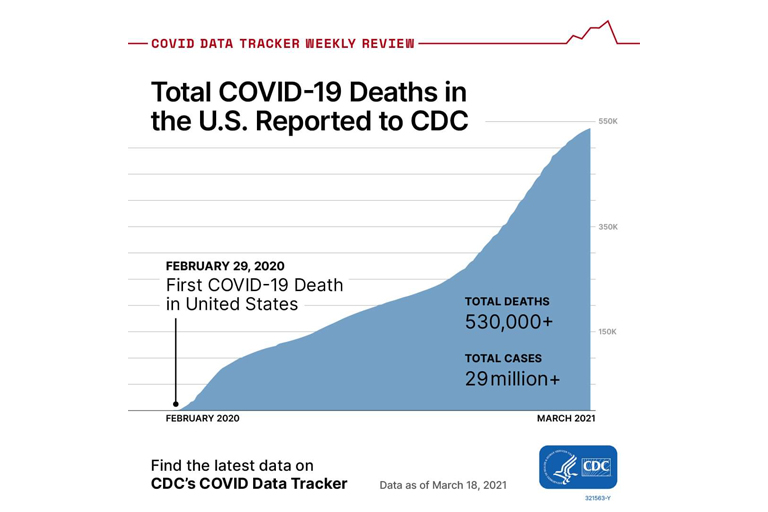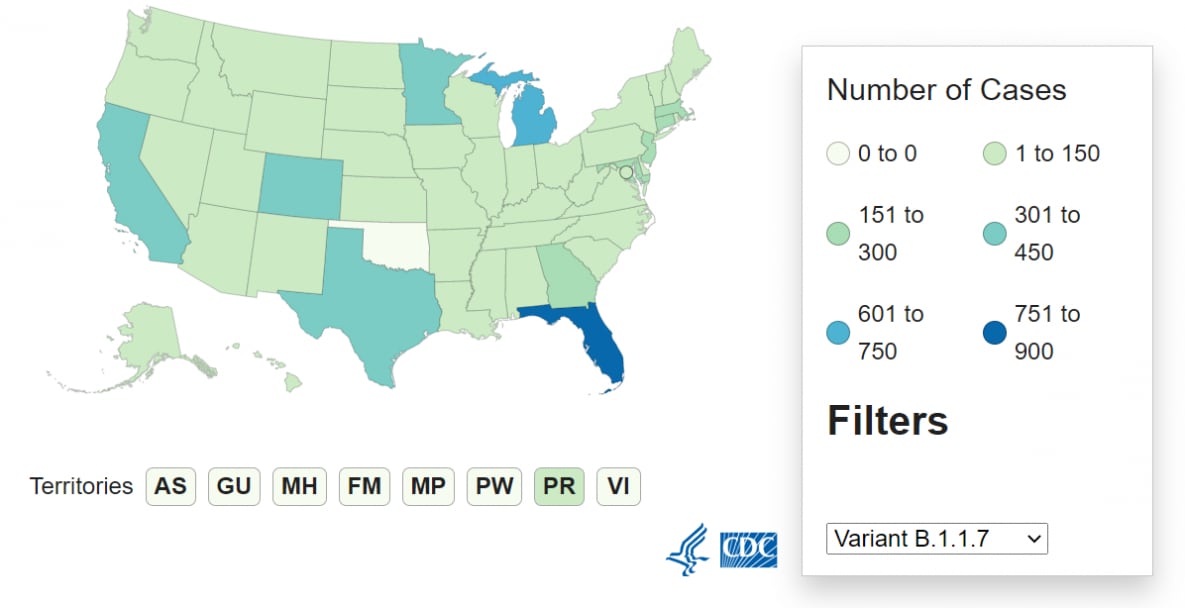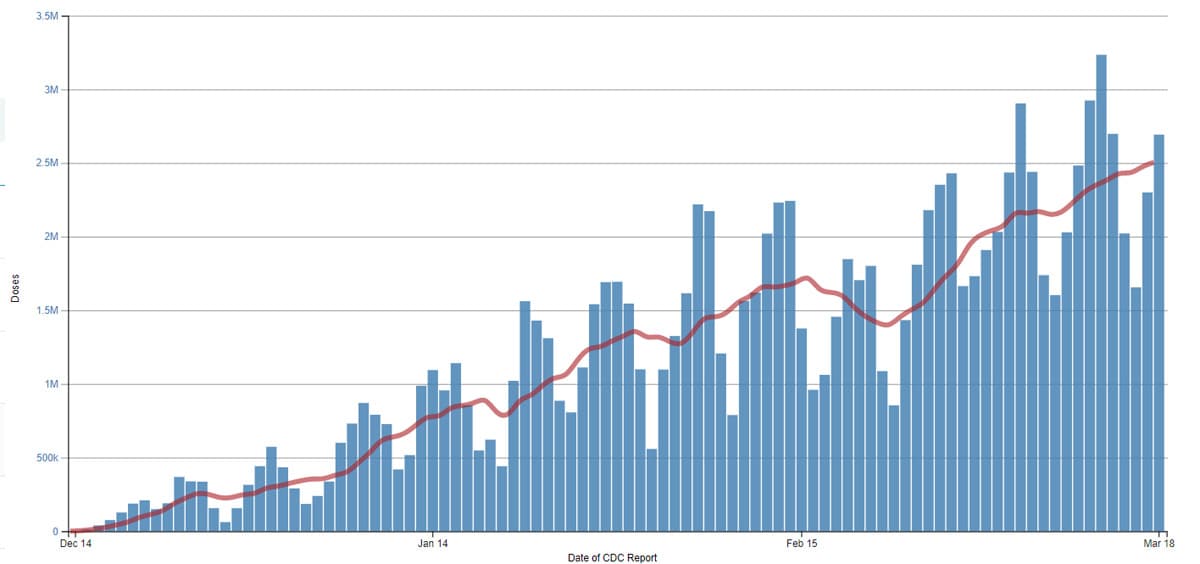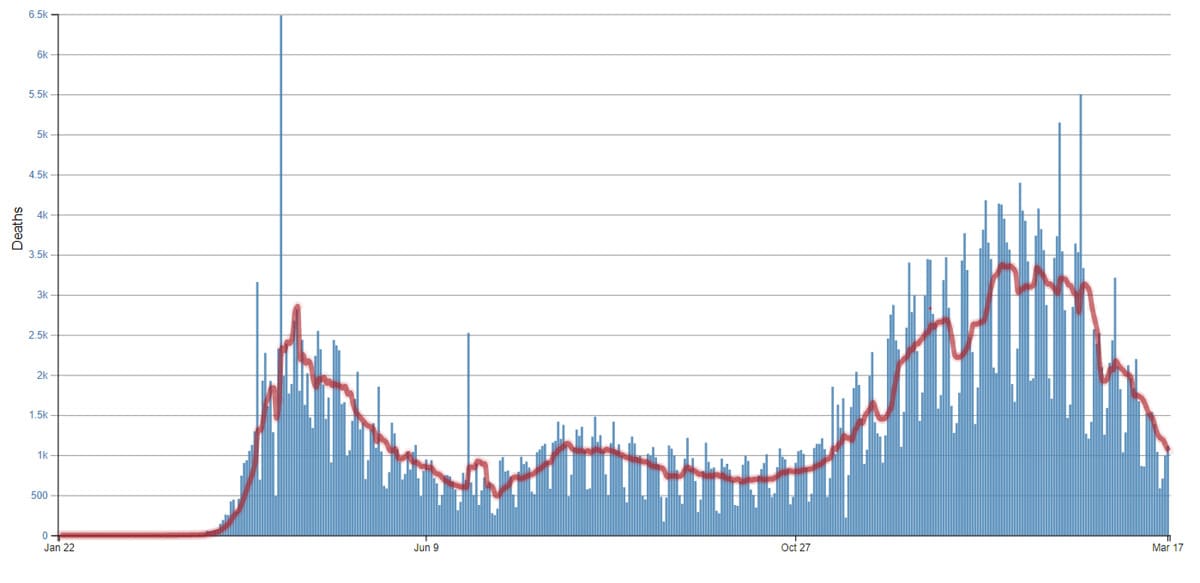En atención a la creciente preocupación sobre la confianza en...
Leer más
Hindsight is 2020: A Year of Heartbreak and Hope

On March 11, 2020, the World Health Organization first characterized COVID-19 as a pandemic. The toll of this disease, the continued loss of life around the world, and the burden in our nation are heartbreaking. In one year, we lost over half a million Americans to COVID-19. Our nation has also experienced separation from friends, family, and loved ones; food insecurity and financial burden; and an unprecedented mental health crisis.
After a year of this pandemic, many of us are feeling tired, lonely, and impatient. Still, through it all, there is determination; there are stories of giving and hope, of stamina and perseverance. It was a hard year, but the progress we’ve made has given us hope…
- Vaccines are available. Today, more than 1 in 5 Americans have received at least one dose of COVID-19 vaccine. Each day millions more people are being vaccinated, providing hope that we can soon gather with our friends and family safely. On March 12, 2021, we reached 100 million vaccine doses administered in just 88 days—thanks to three safe and effective vaccines that have been distributed throughout the United States. CDC recently released recommendations for fully vaccinated people as the first step in safely returning to normal activities.
- Schools across the nation are reopening. CDC released an operational strategy to help pave the way for students’ return to the classroom and childcare guidelines to ensure the safety of our children. Safer communities mean safer schools.
- Testing is widespread. Since the beginning of the pandemic, more than 354 million RT-PCR tests to detect COVD-19 have been performed in the United States. This week, CDC released updated testing guidance to help healthcare providers and public health professionals use testing as a part of a comprehensive pandemic response strategy. Quickly identifying people infected with the virus that causes COVID-19 means they can get medical care and stay away from others, preventing the spread of COVID-19. If you think you may have COVID-19 now or may have had it in the past, learn more about the different types of COVID-19 tests and how to get tested.
- Hospitalizations and deaths are declining. Hospital admissions and deaths are on the decline. We have come a long way from where we were, but we still have much work to do. We must continue to follow proven prevention strategies, and get vaccinated when a vaccine is available to you. We are just starting to turn a corner and the data are moving in the right direction, but where this goes depends on whether we all do what we can to protect ourselves, our loved ones, and our communities.
Even when this crisis is over, we will still need a strong public health system. The COVID-19 pandemic illuminated long-standing inequalities in health among racial and ethnic minority groups; demonstrated the need for resilient, fast, and accurate data systems; and showed the essential role a robust, skilled, and diverse public health workforce plays in protecting Americans. We cannot build the public health infrastructure the nation needs overnight or in the middle of an emergency. We must work together over the months and years ahead to build on the foundations, partnerships, and innovations that we have created during this crisis. It is one way we can turn tragedy into lasting progress and improved health for all.

SARS-CoV-2 Variants
A total of 5,576 B.1.1.7 variant cases have been reported in 51 jurisdictions. One hundred eighty cases attributed to B.1.351 in 26 jurisdictions and 48 cases attributed to P.1 in 15 jurisdictions have also been detected in the United States. In addition, the B.1.427 and B.1.429 variants that were first identified in the United States in January 2021 are also being closely monitored. CDC and partners are increasing the numbers of specimens sequenced in laboratories around the country. Studies are underway to determine whether variants are more transmissible, cause more severe illness, or are likely to evade immunity brought on by prior illness or vaccination.
To better understand the significance of these emerging variants, CDC recently published a webpage describing how variants are classified. CDC also recently published a new Variant Proportions in the U.S. web page, which describes CDC characterization of the proportion of SARS-CoV-2 lineages circulating in the United States. Additionally, the page highlights the estimated proportion of SARS-CoV-2 variants of concern in select states for which CDC has at least 300 genome sequences available from specimens collected during the 4-week period ending February 13, 2021.

Vaccinations
The U.S. COVID-19 Vaccination Program began December 14. As of March 18, 2021, 115.7 million vaccine doses have been administered. Overall, about 75.5 million people, or 22.7% of the U.S. population, have received at least one dose of vaccine. About 41.0 million people, or 12.3% of the U.S. population have been fully vaccinated*. As of March 18, the 7-day average number of administered vaccine doses reported to CDC per day was 2.5 million, a 12.1% increase from the previous week.
Recent COVID Data Tracker updates show the percent of the population 65 years and older who have been vaccinated, and breakdowns of vaccine delivery, administration, and series completion by type. As of March 18, 66.3% of people 65 years or older have received at least one dose of vaccine; 38.6% are fully vaccinated.
115,730,008
Vaccines Administered
75,495,716
People who received at least one dose
40,981,464
People who are fully vaccinated*
*People who are fully vaccinated (formerly “receiving 2 doses”) represents the number of people who have received the second dose in a two-dose COVID-19 vaccine series or one dose of the single-shot J&J/Janssen COVID-19 vaccine.
Daily Change in Number of COVID-19 Vaccinations in the United States Reported to CDC

7-Day moving average

Deaths
In recent weeks, the number of COVID-19 deaths has declined. Overall, deaths have decreased for the past 9 weeks. The current 7-day moving average of new deaths (1,025) decreased 69.7% compared with the highest peak on January 13, 2021 (3,379), and 10.7% compared with the peak on August 1, 2020 (1,148). As of March 17, 2021, a total of 535,217 COVID-19 deaths were reported.
1,118
New Deaths Reported*
1,025
Current 7-Day Average**
535,217
Total Deaths Reported
1,476
Prior 7-Day Average
3,378
Peak of 7-day Average***
-30.6%
Change in the 7-Day Average Since the Prior Week
* New deaths reported here may differ slightly from those on the COVID Data Tracker as new methods are being used to account for historical corrections.
** In the current week, there were 195 historical deaths excluded, and in the prior week, there were 138 historical deaths excluded.
*** The highest peak in the 7-day average of new deaths (Jan 11, 2021).
Note: The table above excludes historical data from the new deaths, the current and previous 7-day averages, and the percent change in the 7-day average.
Créditos: Comité científico Covid







